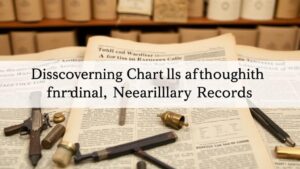Analyzing Public Works Records for Forgotten Tunnel and Underground Sites
Analyzing Public Works Records for Forgotten Tunnel and Underground Sites
Public works records provide critical insights into the infrastructure and development of urban areas, particularly in the context of forgotten tunnels and underground sites. These hidden structures, often neglected in current urban planning, offer valuable information regarding historical transportation networks, emergency responses, and urban development strategies. This article aims to analyze how public works records can be utilized to uncover and understand these sites, and emphasizes the importance of preserving such historical artifacts.
The Relevance of Public Works Records
Public works records include a variety of documents generated by municipal and governmental agencies throughout the planning, construction, and maintenance of infrastructure projects. e documents can range from blueprints, engineering reports, and budget records, to maintenance logs and photographs. By analyzing these records, researchers can trace the origins, purposes, and changes to forgotten tunnels and underground structures.
For example, the New York City Department of Transportation maintains extensive archives of urban projects that include detailed maps of the city’s extensive subway systems, as well as documents pertaining to older tunnels that predate the subway era, such as the Brooklyn Battery Tunnel, initially commissioned in the 1920s. Analyzing such archives can reveal the engineering challenges faced at the time and the societal needs that spurred the construction of these tunnels.
Historical Context of Underground Sites
Forgotten tunnels and underground sites serve as remnants of a citys past, with many constructed for various purposes, including transport, drainage, and storage. Historical context is crucial for understanding these sites. The use of tunnels for transportation dates back centuries; for instance, the London Underground, operational since 1863, has a network that highlights the evolution of urban transport systems.
Also to transportation, many tunnels were originally built for sanitary purposes. A notable example is the Chicago Tunnel Company systems, which operated from 1899 until 1950, facilitating the movement of goods beneath the city. This system highlights the intersection of infrastructure needs and urban growth, making it a critical case study in public works history.
Techniques for Analyzing Underground Structures
Several techniques can be applied to accurately analyze and document these underground sites:
- Archival Research: This involves reviewing written documents, maps, and photographs stored in municipal archives.
- Geographical Information Systems (GIS): Overlaying historical maps with current geospatial data helps pinpoint the locations and sizes of forgotten tunnels.
- Ground Penetrating Radar (GPR): This non-invasive technique allows researchers to visualize underground structures without excavation.
Combining these techniques enables a comprehensive analysis of underground sites. For example, the use of GPR in New Yorks Lower Manhattan revealed previously undocumented tunnels that were pivotal during the 9/11 attacks for rescue and recovery operations.
The Role of Preservation and Future Research
Understanding and documenting forgotten tunnels and underground sites is not merely a historical endeavor; it has implications for future urban planning and emergency response strategies. Recognizing the challenges faced by previous generations can guide modern infrastructure projects. Documentation of these sites contributes to a more thorough understanding of urban dynamics, as seen in cities like Tokyo where historical knowledge influences disaster preparedness.
Plus, historical preservation entails safeguarding these underground structures as part of cultural heritage. Initiatives such as the National Underground Railroad Network to Freedom in the United States highlight the importance of underground sites in preserving cultural legacies and stories.
Conclusion and Actionable Takeaways
The analysis of public works records serves as a vital tool in rediscovering forgotten tunnels and underground sites. This exploration not only uncovers historical narratives but also provides insights essential for modern urban planning. For urban planners, historians, and researchers, the following actionable takeaways can be considered:
- Engage in archival research to locate public works records pertinent to urban sites.
- Use GIS and GPR technologies to accurately map and analyze underground structures.
- Advocate for preservation efforts that recognize the historical importance of tunnels and underground sites.
Ultimately, the study of these submerged infrastructures can enhance our comprehension of urban history, facilitate better city planning, and contribute to the preservation of cultural heritage.
